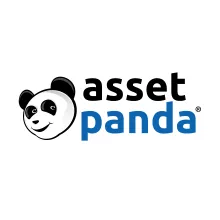Internal app builder with low code
Content Delivery Network (Cdn): An overview
To distribute Internet content rapidly, a team of geographically scattered servers known as a content delivery network (CDN) work together.
A CDN makes it possible for the quick transfer of resources needed for Internet content to load, including HTML pages, javascript files, stylesheets, photos, and videos. As CDN services gain more and more traction, they are now used to handle most online traffic, including that coming from famous websites like Facebook, Netflix, and Amazon.
Websites may also be protected against several typical harmful assaults, such as Distributed Denial of Service (DDOS) attempts, with the help of a correctly built CDN.
While a CDN does not host material and cannot take the place of necessary web hosting, it assists with network edge content caching, enhancing website speed. As a result, many websites choose CDNs because they find it challenging to meet their performance requirements for traditional hosting options.
CDNs are a popular option to alleviate some of the key pain points associated with traditional web hosting since they use caching to minimize hosting bandwidth, prevent service outages, and improve security.
Benefits of using CDN
A group of servers dispersed across a region or the globe that collaborate to hasten the delivery of content on the internet is known as a content delivery network (CDN). Images, HTML, JavaScript , and other webpage material are temporarily stored (or cached) on the servers in a CDN. When a user loads a webpage, they transfer the cached material to them. A CDN is used by practically all websites and applications today to help users access the content.
Some of the main reasons why web applications use CDNs are because they improve performance, boost dependability, save money, and provide resistance against cyberattacks.
- Enhanced performance - The main advantage that comes to mind when discussing CDNs is faster performance and for a good cause. Load times on websites that begin using a CDN have decreased by 50% or even more in some circumstances.
- Increased reliability - CDN enables web applications to function smoothly even when servers are down, or networks become congested. Since CDNs are made up of various servers scattered across numerous data centers, they can also offer a lot of redundancy. Even if a server, a data center, or a group of data centers go down, CDNs can still transfer content from other servers in the network.
- Cost-effective- Reducing travels to and from the origin server is the primary method CDNs help website administrators save money. The origin server does not have to repeatedly supply the same material because CDNs cache a large portion of a website's content and serve it from the cache. Instead, the CDN does this on behalf of the origin server.
- Better resilience against attacks- CDNs are particularly effective at protecting websites from denial-of-service (DDoS) attacks. In these attacks, a website is targeted with massive amounts of unwanted network traffic to overwhelm and crash the website. Compared to a single origin server, CDNs are better equipped to handle high traffic volumes, including abnormal traffic surges from a DDoS attack. They use this to maintain websites online even when they are being attacked.
- Improving web security - A CDN may increase security by offering DDoS mitigation, upgrades to security certificates, and other enhancements.
- Increasing content availability - Large volumes of traffic or hardware issues can prevent a website from operating normally. A CDN can manage more traffic and resist hardware failure better than multiple origin servers because of its distributed architecture.
- Improving website load time- Users see quicker page loading times because of optimizations such as employing a nearby CDN server to distribute material closer to website visitors. A CDN can lower bounce rates and lengthen visitors' stays on the site because visitors are more likely to leave a slow-loading site. In other words, more users will stay on a website longer if it loads quickly.
































































































